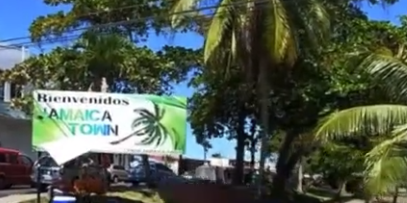The largest group of blacks in Costa Rica is of Jamaican ancestry, most of those who came there to help with the railroad.
The main purpose of the railroad was to transport coffee from the interior highlands to Puerto Limon. After the completion of the railroad, Jamaicans mostly worked in the banana plantation of the United Fruit Company. However, black people were segregated in the country and confined to stay in the Province of Puerto Limon.

Furthermore, in 1936 President Leon Cortes banned blacks from entering the white-populated area of the highlands.
During the 1948 civil war, black people in Costa Rica supported Jose “Pepe” Figueres who became the President of this country. In 1949 Jose Figueres created a new constitution that granted citizenship to black people in Costa Rica.
Jamaican Creole English
Jamaican people in Costa Rica mainly speak Jamaican Patois which is an English-based creole language. A common phrase is “Mek-a-tell-yu,” and it means “Let me tell you” in English. The language originated in the 17th century.
Slaves from Central and West Africa picked up the dialectal which is a combination of an African and English accent spoken by European slave masters. There are at least three generations of Jamaican descendants in Costa Rica. The Caribbean Coastal Province of Limon is home to long-standing Jamaican culture. Costa Rica is proud of its Jamaican-influenced African-Caribbean culture
Since 1850, fishermen of Afro-Caribbean origin began to settle in the Caribbean coast of Costa Rica, especially from Panama and the West Indies. They stayed in temporary camps during fishing seasons, from March to September, to plant coconuts, cassava, and yams, which were then harvested the following season. Since 1828, some of these fishermen began to settle in Costa Rica permanently with their families.
Towards the second half of the 19th century, coffee became the main export of Costa Rica. The crops were transported from the Pacific Coast, by an inaccessible jungle terrain of the Atlantic Coast. To be taken to Europe, they had to turn back to South America, which increased the cost and removed competitiveness. To remedy this situation, in 1871 a railway and a port on the Atlantic Coast were constructed. Because of the scarcity of local labor, workers were imported from Italy, China, and the Caribbean, and Central America. This coincided with an employment crisis in Jamaica that caused an exodus to neighboring countries. So on December 20, 1872, the Lizzie, the first boat from Jamaica, arrived at the port of Limón with 123 workers to work on the railroad. From this moment, the number of Jamaican workers in Limon increased rapidly and the next year already saw over 1,000 Jamaican workers in the port.[2]
Many Jamaicans intended to return home, but most remained in the province of Limón on the Caribbean Coast. In 1890 the railways suffered a financial crisis, forcing many workers to sustain themselves by working in agriculture. This in turn saw the laborers establishing relationships and cultural exchanges with native populations of these areas. Later, the Jamaican workers began working for the banana industry, whose production grew to its peak in 1907.
Usually, these workers lived on the plantations and had little knowledge of Costa Rica beyond their immediate environment. The contact was minimal because the Costa Rican banana plantations were in foreign hands. They did not speak Spanish and retained Jamaican customs. They had their own schools with teachers brought from Jamaica. Until 1949 Costa Rica had segregation laws where Black people lived exclusively in the Caribbean Province of Puerto Limón. By 2011 Afro–Costa Ricans were spread in all 7 Costa Rican provinces: 32% of them in San José, 16% in Alajuela, 15% in Limón, 10% in Heredia and 8% in Cartago and Guanacaste. Today, Afro–Costa Rican people are part of different disciplines and fields in Costa Rica.[4]







